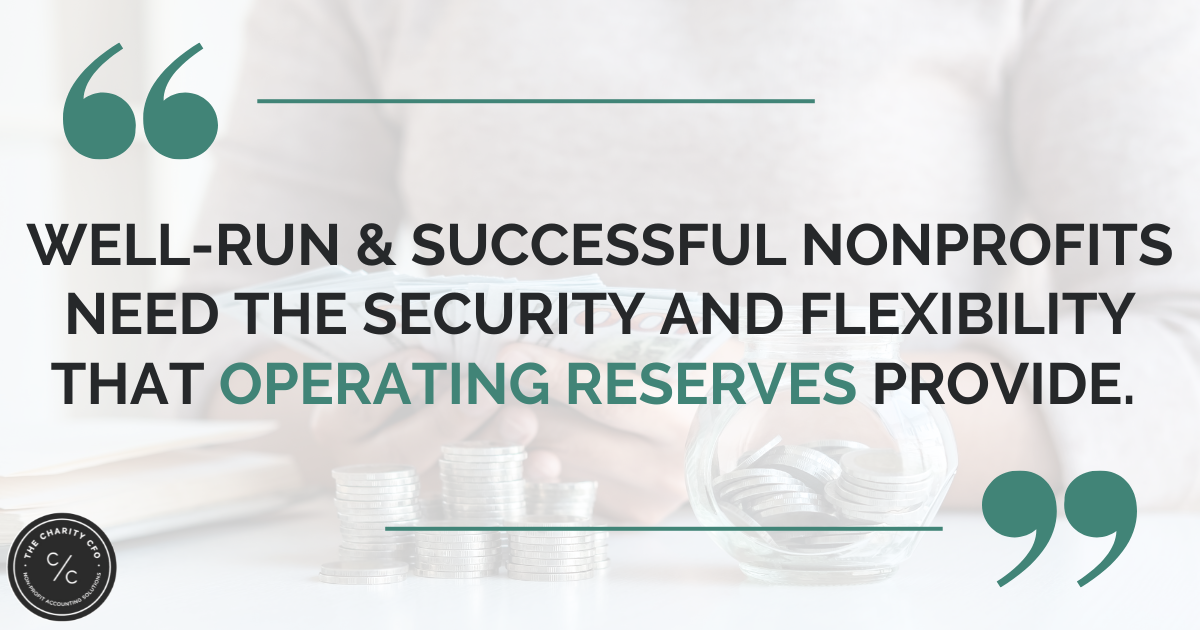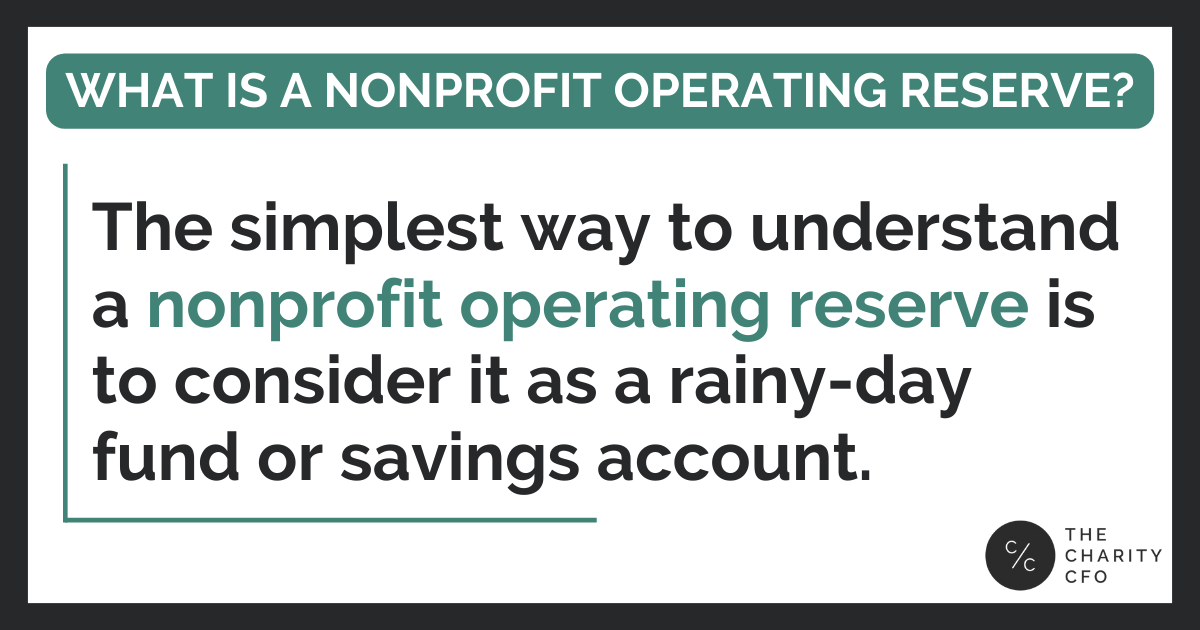No matter what corner of the nonprofit world you find yourself in, every organization has one thing in common – the need for nonprofit operating reserves.
While it may sound complex, it’s a vital part of the financial picture for nonprofit leaders to consider.
Check out the rest of the article to learn more and help determine the right amount for your organization.
What is a Nonprofit Operating Reserve?
The simplest way to understand a nonprofit operating reserve is to consider it as a rainy-day fund or savings account.
While leaders set an annual operating budget based on expected income and expenses, sometimes it’s not entirely on target. Meanwhile, unexpected events requiring extra cash can occur, or potential time-sensitive opportunities can also present themselves.
This reserve is made up of unrestricted funds, which can be spent on just about any organizational need that leaders feel is warranted for ongoing operations. They allow nonprofits the flexibility to deal with the unexpected in a stress-free, reliable way.
However, there are often clear plans for how and when they’re used to ensure reserves aren’t squandered.
Difference Between Operating Reserves and Restricted Funds or Endowments
It’s vital not to confuse operating reserves with other pools of money like endowments or restricted funds.
- Endowments are generally subject to fairly tight restrictions on what can be done with both principal and investment income and are geared toward the long-term financial stability of a nonprofit.
- Restricted funds, as their name suggests, are also subject to rules about what they can be used for, set either by the organization itself or as a condition of a donation. Neither provides the short-term flexibility of operating reserves.
How Much Operating Reserves Do You Need?
There’s no simple number or formula for a nonprofit to determine its operating reserve needs. Leaders need to carefully consider their organization’s financial stability, including potential growth or vulnerability to changing economic conditions and priorities.
Fortunately, nonprofit leaders don’t need to take a complete shot in the dark thanks to some commonly used systems and rules of thumb.
Simplify this now! We’ve created a free sample policy that you can download and use. Head to this page to get your policy download.
Some nonprofits like to ensure operating reserves are a fixed percentage of overall spending or income. Other organizations prefer to set aside a certain number of months of operating expenses, usually three to six or more.
You should reach out to an experienced nonprofit CFO to help you pinpoint an exact amount.
Best Practices for Determining Operating Reserves
Depending on the nature of your nonprofit, it’s possible that either method may work best.
Newer organizations just getting off the ground may want the security of knowing they have a defined runway timeline even if all donations cease. Meanwhile, more established ones might have more data to draw on and more stability in their overall operations, allowing them to base their reserves on a percentage.
Larger organizations may simply select a lump sum that reflects a reasonable amount to cover most unexpected costs or revenue shortfalls.
Nonprofits should look to others in their field for more guidance on how much operating reserve cushion is appropriate.
Balance Reserves and Fulfilling the Mission
It’s easy to toss a large amount of money into operating reserves without thinking about it as it is to ignore them completely. But leaders should never forget that every dollar set aside for reserves is one fewer dollar available for achieving their mission and reaching their goals.
Therefore, it’s critical not to be too cautious in funding reserves, which may be holding back new or expanded programs or could be potential compensation for hardworking staff.
For new organizations or those without experience managing reserves, this can take some trial and error. But getting this right is critical to avoid the cheap satisfaction of saving simply for saving’s sake while more impactful efforts go unfunded.
Managing Operating Reserves Over Time
Remember, nonprofit operating reserves aren’t a “set it and forget it” type of thing.
Leaders and other stakeholders should regularly review how and when reserves are used and assess whether levels are appropriate. They may find reserves running dangerously low on a regular basis or tons of extra cash sitting there unused month after month.
You can use this information to carefully tweak budgets and reserve levels, which can also change based on organizational circumstances or external factors like the economy. Reporting on reserves should also become a regular part of financial updates to the board and donors.
Build Out the Right Amount of Nonprofit Operating Reserves
It’s obvious that well-run and successful nonprofits need the security and flexibility that operating reserves provide.
However, it’s equally clear that setting the proper level of funds can be challenging, with downsides to both putting in too little and too much cash. Still, it’s vital work that will pay extraordinary dividends when trouble arises or unexpected opportunities present themselves.
Nonprofits new and old who need some help with this process have some incredible resources from The Charity CFO. Our skilled financial professionals know the nonprofit world intimately and can help tailor the perfect solution for your operating reserve needs. Contact us today to see how we can help and get started.

Do You Struggle to Make Sense of Your Financial Statements?
Get our FREE GUIDE to nonprofit financial reports, featuring illustrations, annotations, and insights to help you better understand your organization's finances.
Get the free guide!



0 Comments